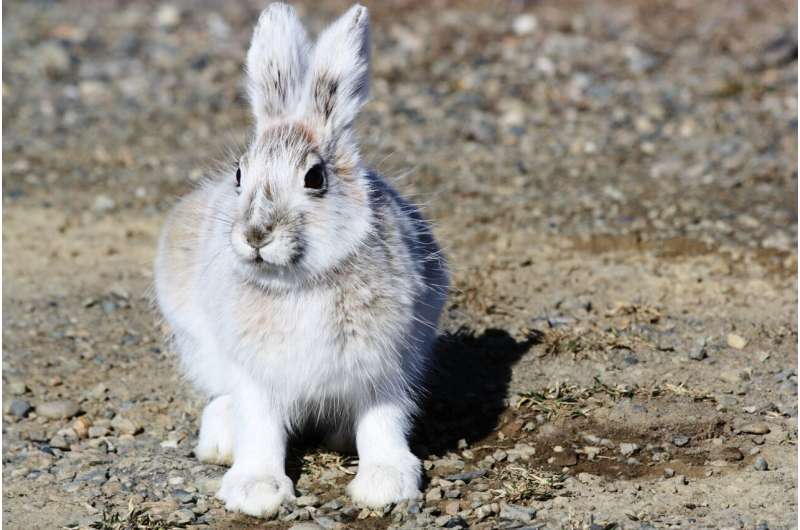Snowshoe hares with mismatched coats due to global warming are faring better than ever

A team of researchers affiliated with multiple institutions in Canada has found that despite rising temperatures due to global warming, snowshoe hares with mismatched coats are experiencing reduced mortality rates. They have written a paper describing their findings and have posted it on the bioRxiv preprint server.
Prior research has shown that snowshoe hares experience a change in coat color depending on the season. During the warm months, their coat is brown and dark, which helps them blend in to their surroundings. As autumn progresses, the dark fur falls out and is replaced with white fur helping the hare to blend in with snowy backgrounds. Research has also shown that the change in coat color is tied to the amount of daylight, not temperature. This has led to mismatches in coat color as global warming has shifted the start of snow season to later in the fall and snow disappearing earlier in the spring. For a few weeks, snowshoe hares with bright white coats stand out starkly against dark, snowless backgrounds. Logic has suggested this would result in a higher mortality rate as the hares are much easier for prey to spot. But in this new effort, the researchers have found the opposite to be true.
To learn more about the impact of mismatched coats, the researchers studied snowshoe hares living in Canada's Yukon territory. In all, they tracked 347 hares using accelerometers as they progressed through the seasons from 2015 through 2018. They were able to verify that the hares went through periods of mismatched coats each spring and fall and found that they thrived instead of falling to predators. Their data showed the mortality risk for the hares during the autumn months was reduced by approximately 86.5%, likely because they foraged between 17 to 77 minutes less during the autumn changeover. But they did not seem to suffer from more hunger because their metabolism rates were lower, another change the hares went through each winter as their coats became more insulated in preparation for the colder monthsResearch identifies how snowshoe hares evolved to stay seasonally camouflaged
More information: Joanie L. Kennah et al, Coat color mismatch improves survival of a keystone boreal herbivore: energetic advantages exceed lost camouflage, bioRxiv (2021). DOI: 10.1101/2021.09.24.461654
© 2021 Science X Network
No comments:
Post a Comment